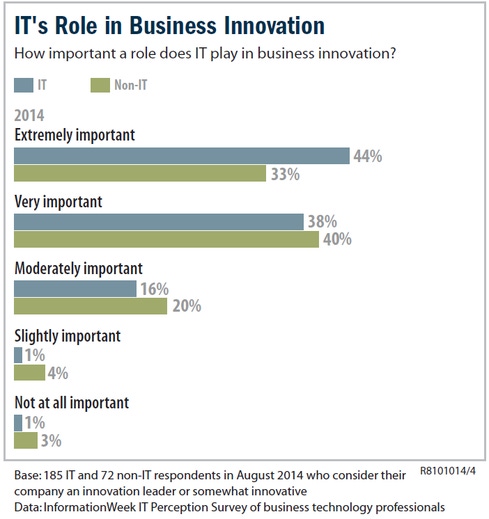Eliminating the time suck associated with mundane tasks wins consumer loyalty. When colleagues knock on your door with ideas, are you ready to support them?


10 Ways To Improve Your Personal Brand
10 Ways To Improve Your Personal Brand (Click image for larger view and slideshow.)
Consider a world where your car shares basic data about itself with your maintenance provider, maybe using a WiFi connection when it's parked in the garage. As a result, your mechanic notifies you, via an app, that it's time to schedule a visit and offers a selection of available service openings that can be easily scheduled via the app with the swipe of a finger. To encourage engagement, maybe the provider even offers timely deals, like asking if you'd like winterization at a 15% discount while your oil change is happening.
That's called opportunity.
Cars are increasingly computerized. Most now tell owners when it's time for an oil change or tuneup, but this data is not -- yet -- shared with the place that performs the service. The consumer has to do the leg work.
That's called inconvenience.
As with depositing a check or paying for coffee via a mobile phone, eliminating the time suck associated with mundane tasks is almost always a sure way to win consumer loyalty and lead a market. Consumers see time as their most precious commodity. Eliminating inefficient processes -- driving to the bank and depositing a check in person, or digging for cash to pay a barista -- delights existing customers and helps attract new ones. Just as important, it establishes belief (trust) that your business will meet consumer expectations for new and innovative ways to engage.
If they haven't already, your business colleagues will soon be knocking on your door with ideas. Are you ready to support them?
[IT pros overestimate how pivotal the business considers them when it comes to innovation, a new survey shows. Getting the infrastructure tuned to support IoT efforts can help burnish your image.]
Certainly, devices talking to devices (estimated to be worth in the area of $2 billion by 2018, based on Cisco's Visual Networking Index) implies a significant infrastructure transformation. It demands massive scalability and changes to the way connections are managed, owing to the more regular, interval-based communication flows between reporting devices and their collection points within the data center.
The systems involved in the scheduling process are also affected, particularly when the process involves a large customer base that may be on similar schedules, causing ebbs and flows of demand for certain services. Think check deposits on Fridays or demand for inspection stickers at the end of every month.
Using analytics to identify these ebbs and flows can enable predictive (proactive) scale as well as adjustments to performance requirements. Application-driven, flexible policy enforcement for scalability and performance will be a boon, ensuring processes execute successfully and increase customer satisfaction -- and use of those services your company worked so hard to build.
Make no mistake, the developers tasked with implementing these applications are worried about architectural challenges. In a recent brief, Joe Skorupa, VP and distinguished analyst at Gartner, discussed the stress the enormous number of devices, coupled with real-time business processes, will put on the data center. The volume, velocity, and structure of Internet of Things data create challenges. "Data center managers will need to deploy more forward-looking capacity management in these areas to be able to proactively meet the business priorities associated with IoT," says Skorupa.
What does that mean, exactly?
Service topologies must be software-defined based on process, not packets. Similar to the way service providers must first identify the subscriber (and applicable services, quotas, and access), businesses that incorporate the IoT will need to identify the "user" and the purpose of the interaction. This is because a smart device may simply be reporting in, or the user may be actively interacting with the business through the same device. Context matters.
Different modes of operation have different performance and availability requirements, based on the consumer's expectations. Thus, it will be imperative that IT be able to identify not only the device, but the purpose of the interaction and then select the appropriate path through the network, inclusive of the services appropriate to supporting the performance and availability expectations of the consumer. Talk about Quality of Service on steroids.
Context also depends on your business. Reporting current mileage to my maintenance provider to check when my next oil change should happen is neither time-sensitive nor impacted by poor performance. The ecosystems depending on heart monitors (like a Holter) reporting back to your doctor or hospital, in contrast, are very sensitive to availability and performance issues, as are life-alert systems, such as those that detect sudden changes in orientation indicative of a fall and immediately alert a call center to initiate emergency processes.
To support the business of things, then, IT, needs to focus on three core areas:
Predictive and dynamic capacity management (strategic scalability).
Application-specific, purpose-driven service policies to manage performance to, from, and even between things in physically separate locations.
Contextually aware, flexible identity and access services capable of supporting notions of individual host identities within the context of consumer group ownership.
To make this work, you need technologies and methodologies like SDN, cloud, and DevOps to free time and budget across all IT groups. Use these resources to focus on architecting systems and provide the visibility needed to predict capacity needs and adjust performance dynamically.
In the end, the Internet of Things relies on connected things and data. Connections ultimately rely on the ability of the network -- all seven layers -- to deliver.
Just 30% of respondents to our new Big Data and Analytics Survey say their companies are very or extremely effective at identifying critical data and analyzing it to make decisions, down from 42% in 2013. What gives? Get the The Trouble With Big Data issue of InformationWeek Tech Digest today. (Free registration required.)
About the Author(s)
You May Also Like







